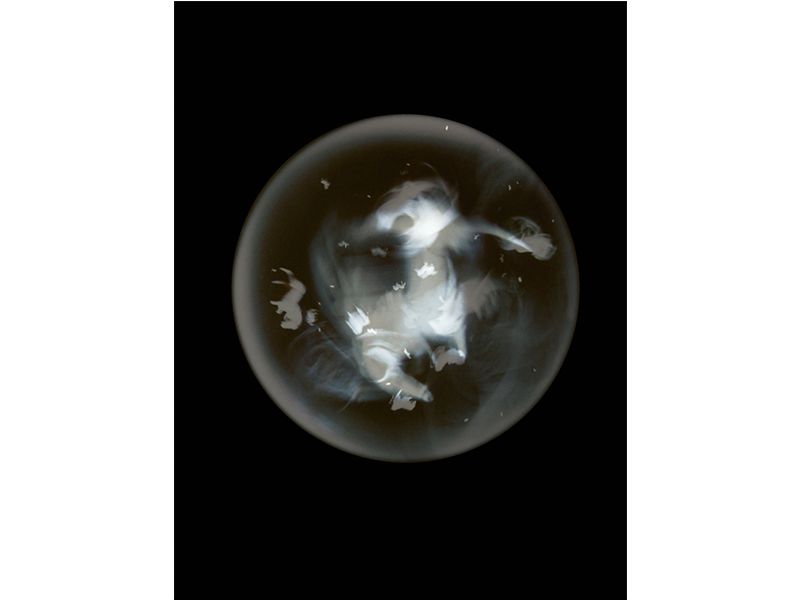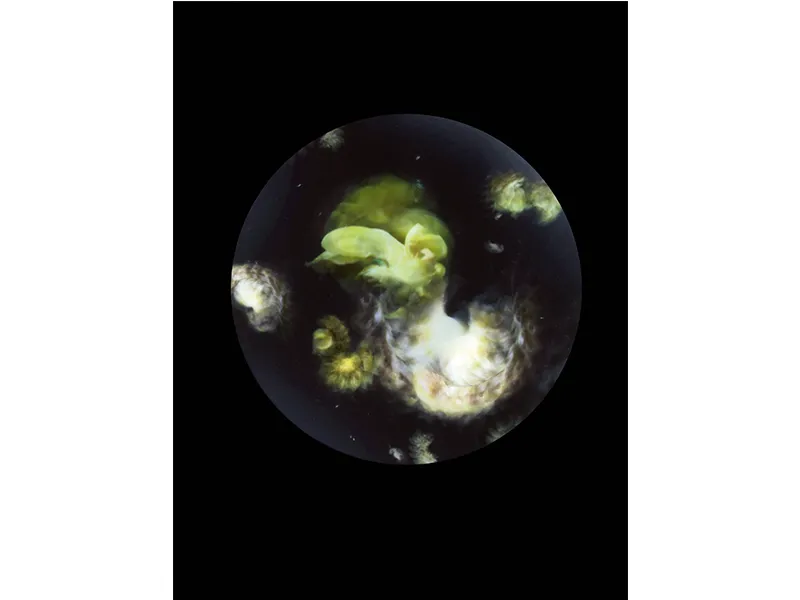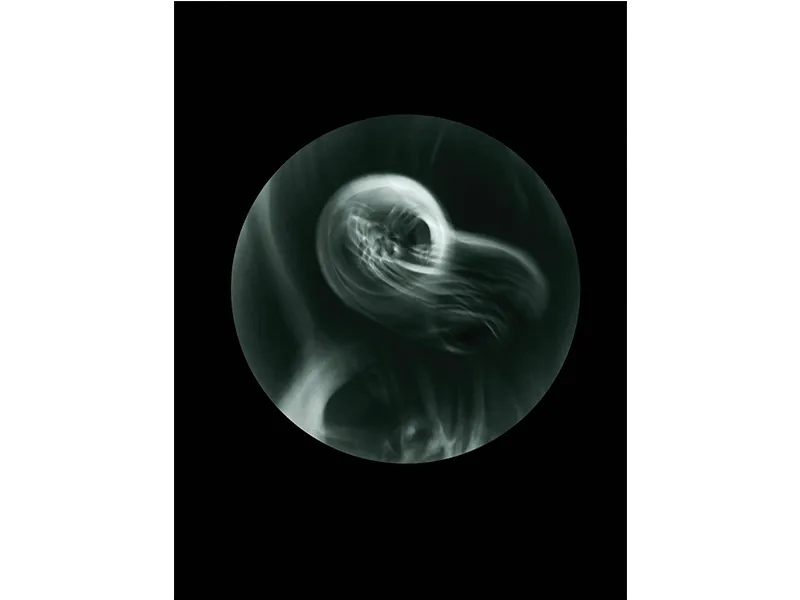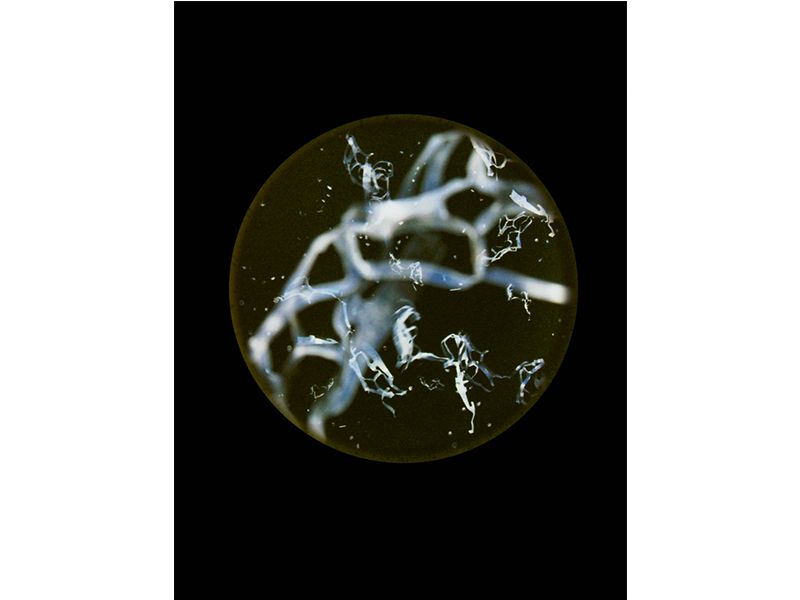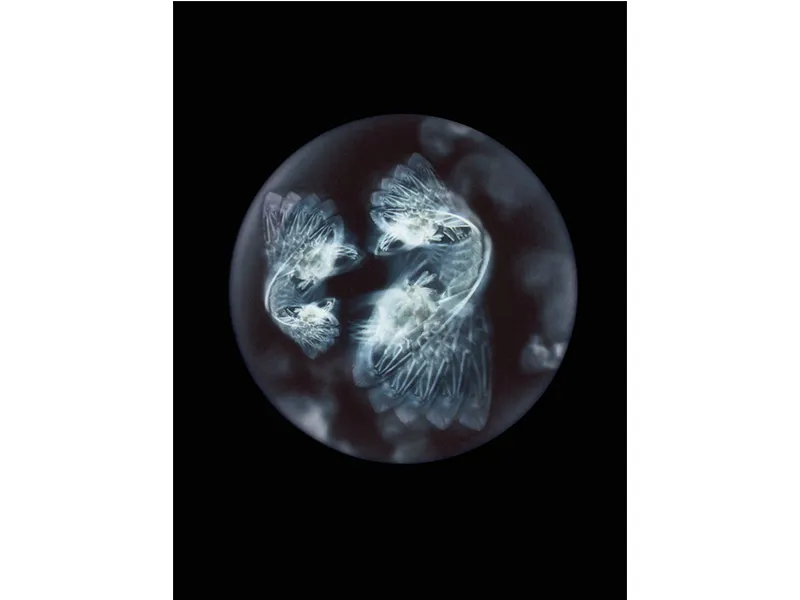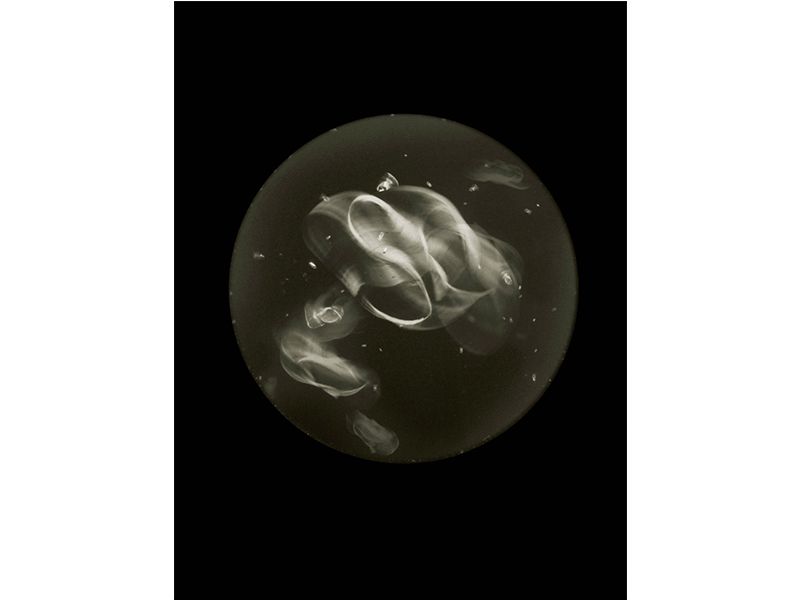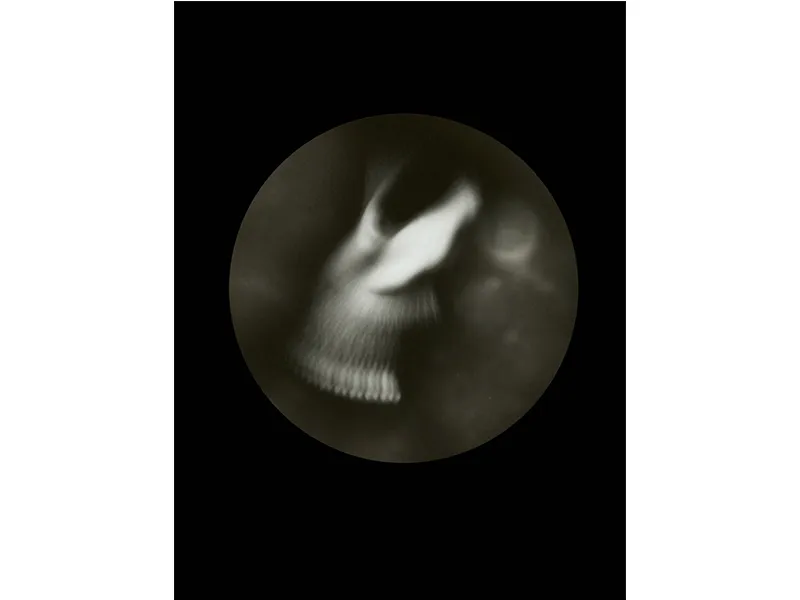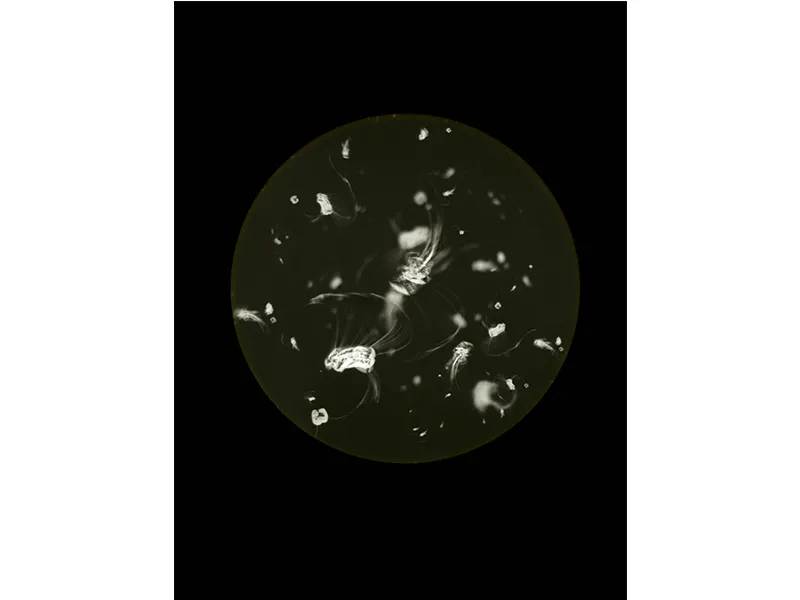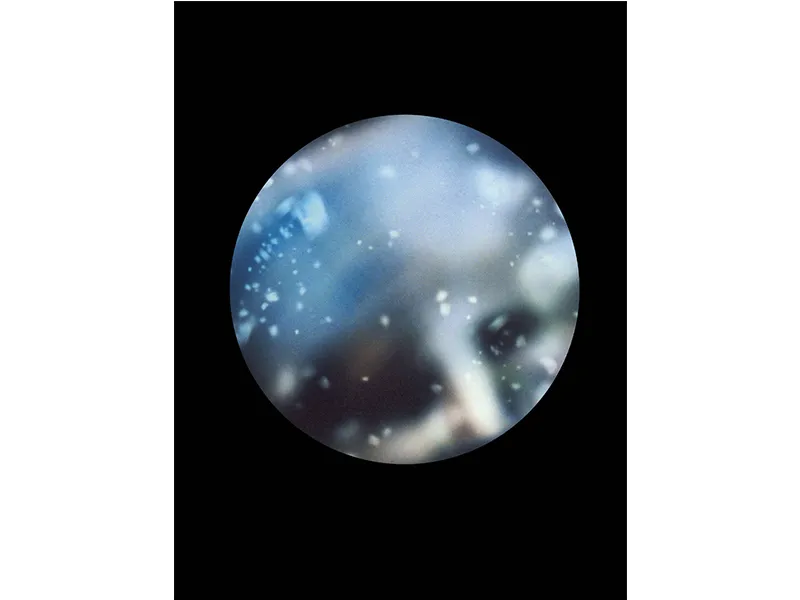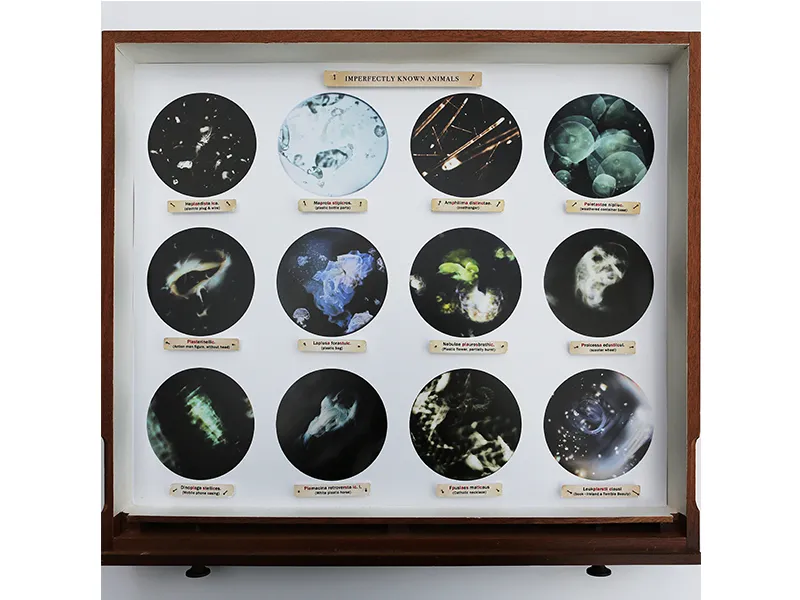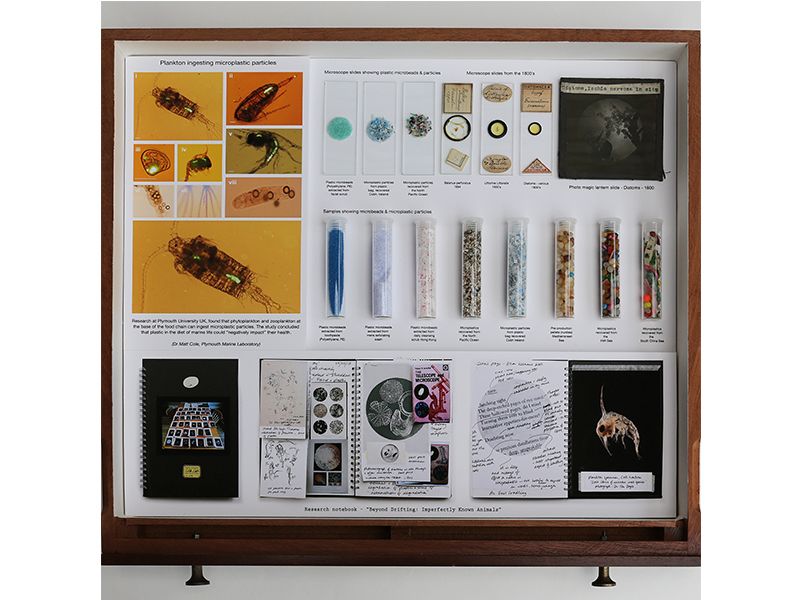These Haunting Photographs Call Attention to Plastic Trash Swirling in the Ocean
Award-winning photographer Mandy Barker explores the beauty and tragedy of marine plankton and plastic waste
At the start of creating her latest series, photographer Mandy Barker's 35-mm camera broke. She was pleased.
“It was quite interesting because it gave me unusual effects,” the Leeds, U.K.-based artist says. “The camera’s plastic light seal had deteriorated in the more than 20 years since it had been made, causing a sticky mess on the shutter that the film then stuck to,” she explains. “I thought, this was an idea to pursue because it relates to imperfection.”
Barker’s new series came to be called "Beyond Drifting: Imperfectly Known Animals." It takes a closer look at an environmental problem she has tackled before.
The photographer’s series have won international awards for tackling the grim story of marine plastic debris. Her series "SOUP" was inspired by learning about the great whirling gyre of plastic trash swirling in the mid-Pacific known as the Garbage Patch. She explored that idea even further with "‘Hong Kong Soup: 1826," featuring collections of plastic gathered from more than 30 beaches in the Hong Kong area since 2012. The trash swirls, floats, and schools like fish against a black background.
In the new series, the images resemble otherworldly life forms displaying curled, fanned or branching structures and surrounded by ghostly afterimages. Portions of the creatures are in focus and other portions are hazy, confined within a circle that evokes the field of view as seen through a microscope. Yet the creatures were never alive. As in much of her work, Barker is photographing pieces of plastic trash.
Barker had read about the tiny particles of plastic floating in the world's oceans that are being nabbed by hungry zooplankton. The miniature plastic particles have either broken down from larger pieces or started small, such as the microbeads found in face wash. By washing into the ocean, the tiny particles are creating huge problems for the health of zooplankton, oysters, corals and other sea life. Mistaking the particles for food, marine creatures fill their bellies with plastic and can succumb to intestinal blockages, perforations, poisoning from pollutants in the waste or simply feel satiated and starve to death. The microscopic zooplankton form the foundation of many marine food chains, so the effects ripple.
Barker was also inspired by a naturalist and biologist, John Vaughan Thompson. Thompson, born in 1779 in British controlled Brooklyn, published extensively on the natural history of various organisms, including marine plankton. Charles Darwin took Thompson’s memoirs, "Zoological Researches, and Illustrations Or Natural History Nondescript Or Imperfectly Known Animals: in a Series of Memoirs," on the Second Voyage of the Beagle.
Barker borrows that evocative phrase for her series and the idea of imperfection runs through the project. "The plankton are now imperfect because they have plastic in them," she says.
Ultimately, Barker broke four different cameras to complete her series. Each had the same flaw and let unexpected light leak in and alter the photographs. The series made the shortlist for the Prix Pictet, a prestigious international award focusing in photography and sustainability. An exhibition at The Victoria and Albert Museum in London opened May 6 and features all 12 of the photographers on the shortlist, including five works from Barker's 25-image series.
Barker spoke to Smithsonian.com about her new photography series.
How did you come up with the idea for the "Beyond Drifting" series?
The work actually began as part of an artist's residency in Cobh, Ireland, where I was introduced to the work of John Vaughan Thompson, a naturalist and biologist who worked in Cork Harbor. I thought it would be a really good idea to take current scientific research and tie it to the research in the 1800s. There's also the idea that in the 1800s, there wasn't any plastic around to be ingested by plankton.
I've represented plankton-like specimens from the plastic I collected from the same places in Cork Harbor where he did his work. The specimens look like plankton that are being viewed under the microscope, when in fact they're actually plastic objects that have been moved in camera to look like plankton. So it is a kind of a trick initially.
Can you tell me how you collected and selected the plastic objects?
For a month, I walked miles and miles of Cork Harbor. I engaged with the local community there and got people to come and do some beach cleans. The items that the public picked up, I've used. So it's a kind of nice collaboration.
There was lots and lots of plastic collected. I tried to select a cross-section of the sample. I picked out, for example, plastic bottles, beer can packaging, toys, plastic flowers. I wanted to get a bit of a diverse collection and all things people might use everyday. That might make them think: "How did that coat hanger end up in the ocean?"
How do you set these objects up and photograph them?
They are exactly as they were found, collected from the shoreline and unwashed. I bring them back to the studio and put them on a black velvet background. I use a fairly long exposure of several seconds, and I move the object on the velvet whilst the camera shutter is open. So this fairly long exposure gives the sense of movement. I studied the way that plankton moves in the ocean and tried to recreate that sort of motion.
What do you think people feel when they see these photographs?
I hope that they think they are sort of scientific microscope images, but when they read the captions and the descriptions, I hope it makes them think about the problem with plankton eating these pieces of plastic.
Plankton are at the bottom of the food chain, so when they eat the plastic it is detrimental to the rest of marine life and also to ourselves. Plastic pieces end up in fish and oysters that we eat.
I hope people will be shocked. I'm trying to create images that are beautiful in some way and attractive enough to draw the viewer in, make them curious. Then I want to shock them.
I think that science and discoveries are often put out are through scientific research journals or papers or things read in science circles. But it's hard to connect people to that. I feel that's my job as an artist and quite a powerful way of engaging an audience.
Your work has garnered a lot of attention and awards. Have you been surprised at this reaction to your photographs?
Yes, I'm constantly surprised. Perhaps my work has coincided with more attention on this issue, research-wise. Initially it was my "SOUP" series that was picked up about seven years ago. At that time, I don't think there was much public knowledge about the issue. Those images just went viral and since then people seem to enjoy my work. I feel very lucky.
That sounds like your work is doing what you hope—shocking people and grabbing them.
It does seem to work. I get a lot of emails from people saying it has made them think about their contributions of plastic waste. I couldn't be happier: That is my whole aim to make people think about what they have been using, to buy less plastic. If my work does that, then it has succeeded on some level.
This project involves more than photographs. Can you tell me about the pieces that accompany the plastic plankton images?
I've tried to recreate an old science book from the 1800s and emulate the work of John Vaughn Thompson. I wanted people to have a book to look at and take their viewing from there. Initially, I hope it will be viewed as an old specimen book that people will open and then realize what it is trying to tell.
And there are two specimen drawers. One has some marine plastic objects collected from around the world and in Cobh, as well as some microbeads—these are what they are finding in plankton. I balance that with the other specimen drawer, which shows a kind of old take on plankton specimens. They are my images, but they've been put in the drawer and pinned with old-style specimen labels.
So I've tried to recreate old and then current research.
What was it about John Vaughn Thompson's work that grabbed you?
There are lots of famous discoverers and adventurers—Charles Darwin, for instance. But Thompson was a very unsung hero. A scientist who works on plankton in the Cork Harbor explained this to me. John Vaughn Thompson really did a lot of fundamental research but scientists now haven't heard much about him. It was quite nice to highlight his work.
Do you have any new projects on the horizon?
For my next project, I hope to highlight the issue of synthetic fibers, which have now become a problem in the ocean. These are the sort of synthetic fibers that come from synthetic clothes. They are actually shedding off in the wash and going straight out to sea. Now, they can be found in the stomachs of fish. So this new research will be my next focus.
Peruse Barker's work digitally on her website or during her takeover of Smithsonian Magazine's Instagram feed May 6 - 12. Visit the work in person at the Victoria and Albert Museum in London May 6 - 28. Meet the photographer herself during Photo London, held May 18-21 at the Somerset House. Barker will be signing the book associated with her new series in the East Wing Gallery there on May 20 and 21.
